Why You NEED To Visit the Faroe Islands; The Perfect Faroe Islands Itinerary (5 days)
So why is it you need to visit the Faroe Islands? Well first for me was the question of How many countries in the world are there (my thoughts here)? I set my target at 197 but since finishing that, I’ve kinda unofficially extended that to 215. Why? You get places like Greenland, Abkhazia, Somaliland, and the Faroe Islands. It’s confusing! So off I went to the Faroe Islands, and it didn’t disappoint. This place is about to BLOW UP, Iceland wasn’t on anyone’s list just 10 years ago, then BOOM, everyone wants to go there.
Visit The Faroe Islands now! It’s as beautiful but without the tourists. Go explore before the tour groups come! Seemingly adrift in the frothing swells of the North Atlantic, the Faroe Islands are an 18-piece jigsaw puzzle of mountainous islands located halfway between Iceland and the northern tip of Scotland.
Table of contents
- Why You NEED To Visit the Faroe Islands; The Perfect Faroe Islands Itinerary (5 days)
- So Are the Faroe Islands A Country?
- About the Faroe Islands
- Where are the Faroe Islands?
- The Weather in the Faroe Islands
- When’s the best time to visit the Faroe Islands?
- How to Get to the Faroe Islands
- The Faroe Islands International Airport: Vágar Airport (FAE)
- The Faroe Islands Capital City; Tórshavn
- Food and Drink in the Faroe Islands
- Things to do in the Faroe Islands; A 5 Day Faroe Islands Itinerary
- The Faroe Islands Itinerary
- Day One
- Day Two
- Day Three
- Day Four
- Day Five
- The Northern Lights in the Faroe Islands
- Are the Faroe Islands expensive?
- FAQs about visiting the Faroe Islands from my experience
- 1. What’s the best time to visit the Faroe Islands for adventure travel?
- 2. What are the top adventure activities in the Faroe Islands?
- 3. How easy is it to get around the Faroe Islands for adventure travel?
- 4. Do I need a guide for hiking in the Faroe Islands?
- 5. What’s the weather like, and how should I pack for an adventure trip?
- 6. Can I camp in the Faroe Islands?
- 7. Is it expensive to travel to the Faroe Islands?
- 8. Are the Faroe Islands safe for solo travelers?
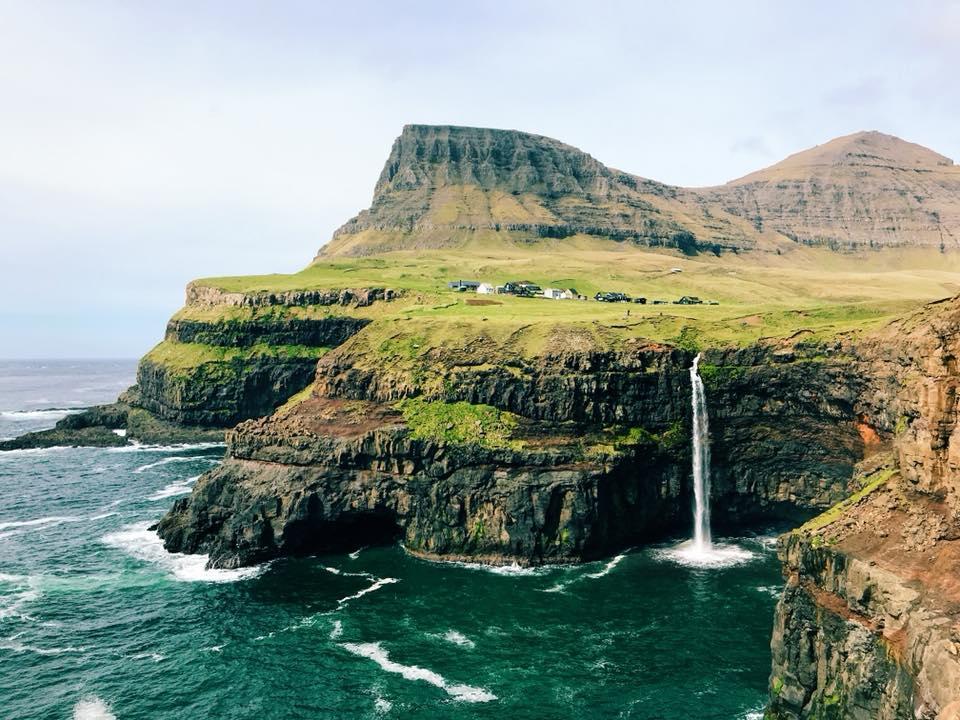
So Are the Faroe Islands A Country?
The Faroe Islands are a self-governing nation. Much like Northern Ireland, Scotland, Wales and England being independent nations. But all being under one country the United Kingdom. In the Faroe Island’s case, they are part of the Kingdom of Denmark. So they have their own government, flag and language. They also have a thriving fishing industry that accounts for approximately 95% of its GDP or economy.
Beautiful in a very Scandinavian type of way, they’re not soothing or comfortable. Instead, they have this wild, raw natural beauty. One of the first things I observe is that there are no trees, just the wind and ocean helping to create a surreal other-worldly feel.
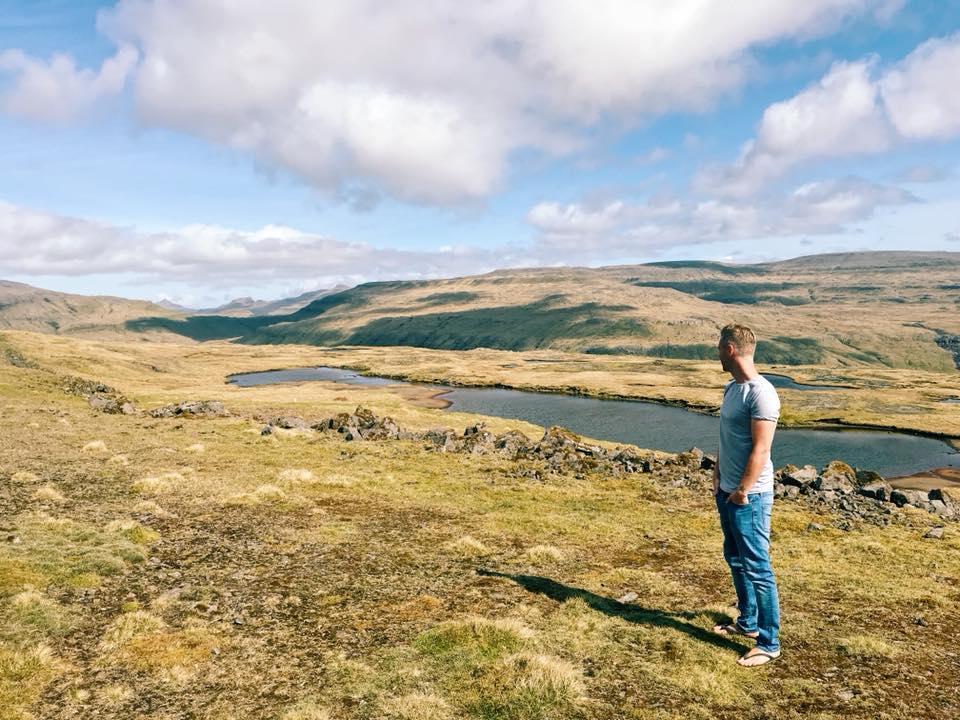
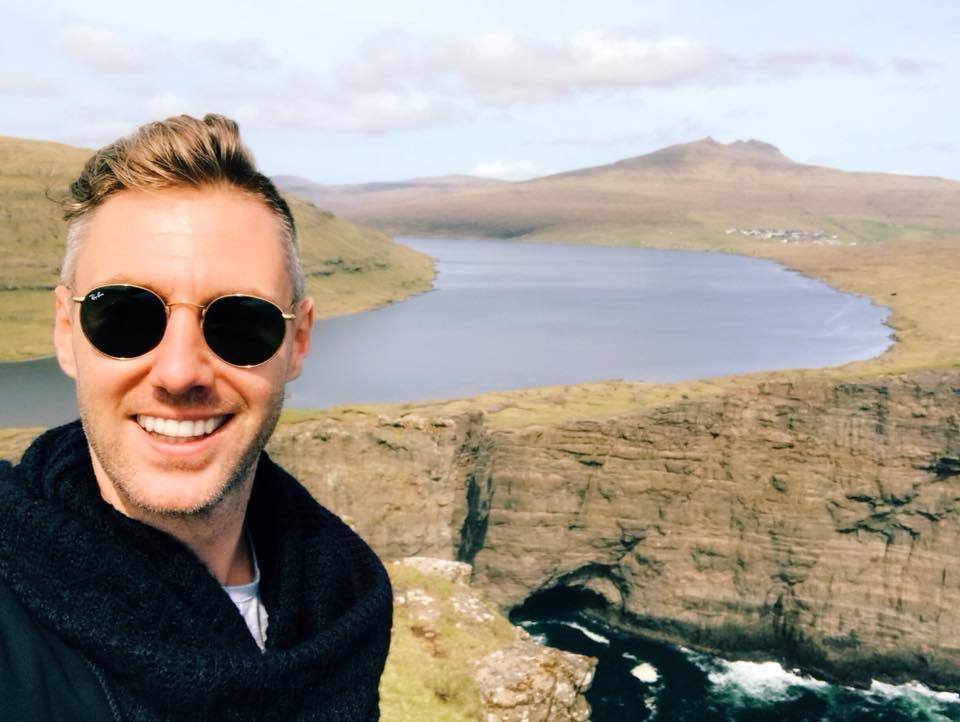
About the Faroe Islands
With significantly more sheep than people, I noticed that the Faroe Islands have remained isolated from the Instagram hungry snappers that have turned Iceland into a virtual Disneyland. And despite only being a two-hour flight from major European cities. They remain for now at least, off the tourist radar.
And the people who live there? 50,000 of them are descended from Vikings and the odd Celt or two and have a transparent openness that is humbling in the way they look at the world.
Iceland before the tourism!
Spending some quality time with the locals here, I can honestly say that surprisingly few groups of people this size are so ‘alive’ when it comes to music and the arts. Both avenues tend to provide escapism for the Faroese. Especially when the weather turns inclement and the days get shorter. That being said, don’t expect any crazy nightlife. There was nothing really happening on our one night drinking at the weekend there.
Grass-roofed houses add to the allure of the imposing stark, treeless fells. I loved the multi-coloured cottages that are scattered about and break up the emerald green of a land where it rains 300 days of the year.
Networks of well-trodden stone-marked footpaths still crisscross the Islands. Despite even the tiniest of hamlets now being connected by beautifully tarmacked roads and series of tunnels. Two of these connecting tunnels have been constructed under the sea.
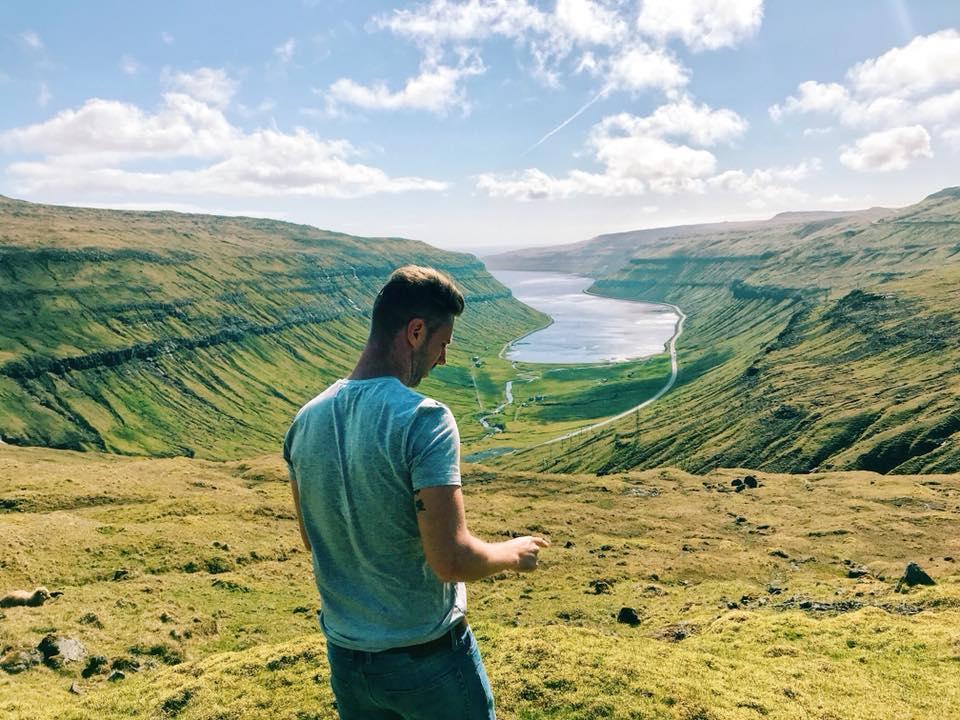
What was remarkable was that I never had to worry about being without a signal on my mobile phone either. The Faroes pride themselves on their advanced telecommunication and broadband network.
It truly is a paradise for the hikers I saw and ornithologists who accept that putting up with rain and mist is just a small price to pay to be alongside its striking beauty. The Faroe Islands will blow you away as they did so for me. With their spectacular waterfalls and an abundance of seabirds. Including one of nature’s most fascinating birds, the ‘clown of the sea’, the colourful Atlantic Puffin.
Where are the Faroe Islands?
In Northern Europe, ‘belonging’ to Denmark but just north of Scotland. Check out the map below, zoom out to get a better idea.
The Weather in the Faroe Islands
In 2 words, not great! What I experienced was that the weather in the Faroe Islands is extremely unpredictable. It can have you put on a sweater during the summer. Think of wind and rain with the odd sunny day and you’ve got the gist of it. A waterproof jacket is a must as is a good pair of shoes for all the walking you will be doing.
On a contrasting positive note, the Faroe’s have very mild winters. With temperatures rarely dropping below freezing. If you are lucky enough to be in the Faroe’s following a dusting of snow, the place looks magical. Just be sure you manage to take some photographs while it is daylight. As unlike the summer when it stays light till midnight, at the peak of winter you only have five hours of daylight.
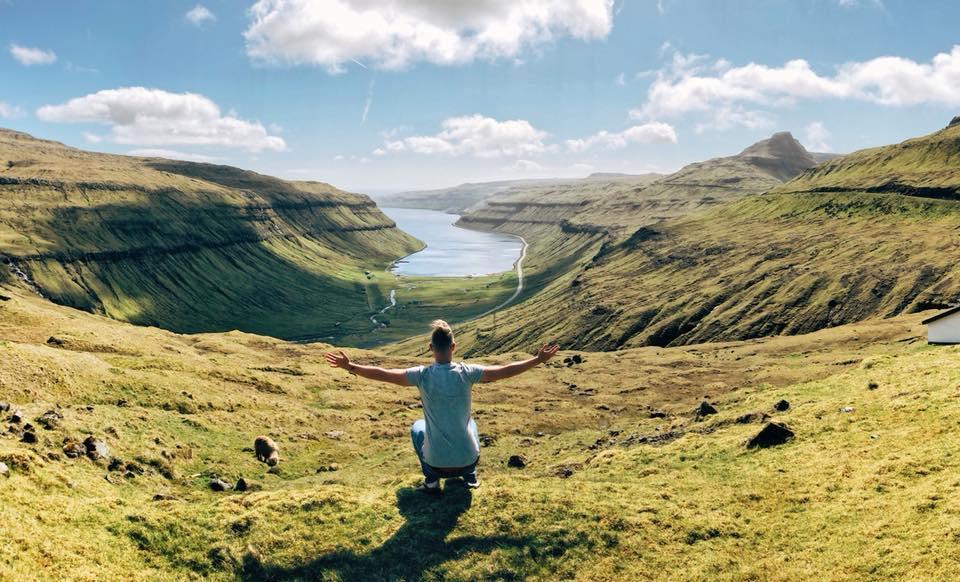
When’s the best time to visit the Faroe Islands?
I went in the thick of summer. So even though the weather is mostly cold all year round, the best time to visit the Faroe Islands is from May to September. Late spring and early summer bring longer days, wildflowers, and Atlantic puffins. Winter would be cool because this place covered in snow would be magical. But the days would be super short, that’s a choice you have to make.
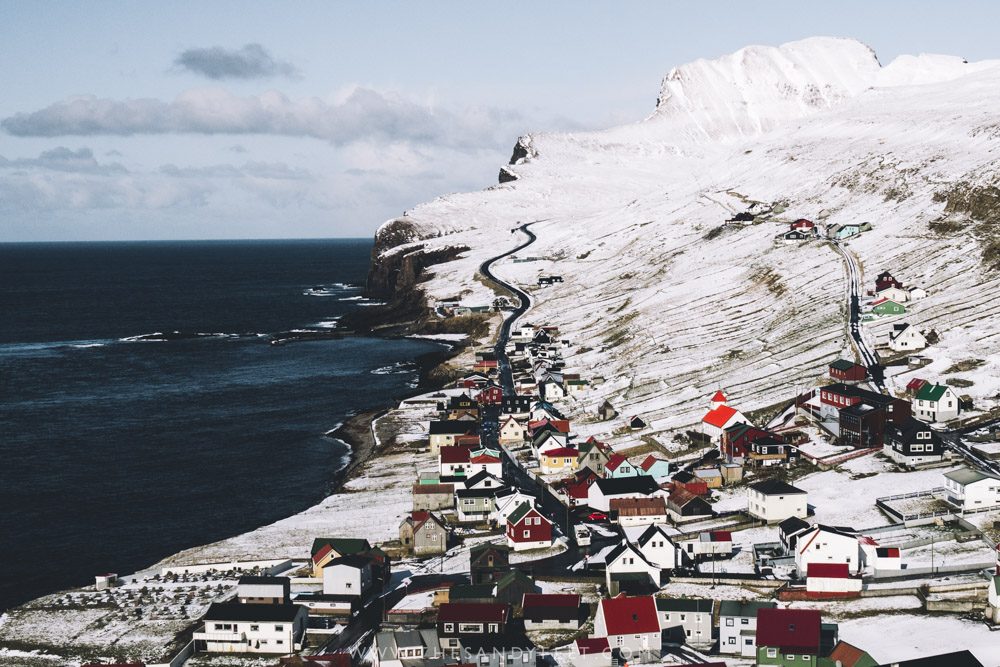
How to Get to the Faroe Islands
TLDR: You fly from Copenhagen, Denmark for about $150 each way.
The Faroe Islands had been on my bucket list of places to visit for quite some time. I’m convinced that 2018 was the optimum year to visit, as mark my words, the Faroe Islands will become popular in the next few years. In some respects, there are nostalgic reminders of Iceland. However here, you have the place all to yourself, at least for now.
Despite a few attempts to operate an air service between the Faroe Islands and Denmark before the Millennium, getting to the Faroe’s required taking a ferry from the Jutland peninsula in northern Denmark to Tórshavn, the Faroe Island’s Capital City. We are not talking about a sunny cruise here either. But a 36-hour journey on unpredictable North Atlantic swells. Fortunately, the Faroe Islands now have their own airline flying a new fleet of Airbus 320 aircraft.
The Faroe Islands International Airport: Vágar Airport (FAE)
Vágar Airport is located just outside the village of Sørvagur on Vágar Island. In the south of the Faroe Islands. With a sub-sea tunnel connecting it to the main island of Streymoy and the capital Tórshavn.
Once I landed at Vágar Airport and clear customs I had several ways of getting to Tórshavn that included public bus, taxi or hire car. The journey takes me 40 minutes and involves driving through a 5-kilometre long neon-lit underwater tunnel.
If you want to hire a car at the airport as I did, it’s a good idea to get to know the rules of the road before you set off. As I experienced, a lot of the roads on the Faroe Islands are very narrow and are littered with laybys so that vehicles can pass each other. When using the sub-sea tunnels a toll of DKK 100, (around 14€) is required which auto-reads your car hire and deducts from your credit card they have stored, simple!
The Faroe Islands Capital City; Tórshavn
As I try and absorb it all standing and staring at the city, I remembered that the origin of its name comes from the Norse god of thunder. Whether having good imagination or not, I personally note that the Faroe Islands capital Tórshavn is more like the fairytale picture out of a children’s book with its small red houses and white painted windows.
Located on the southeast coast of Streymoy, the largest island in the archipelago where nearly half people live, Tórshavn is the epicentre of the country and the place where you will find the best restaurants and ‘nightlife’ (ahem).
For this reason, I decided to stay at the Hafnia Hotel in the centre of the city. It was ideally placed within walking distance of the gorgeous harbour, and the few bars and restaurants in town.

Food and Drink in the Faroe Islands
I’m veggie, so in short, the options weren’t great. Fish & lamb are the main staples in the Faroe Islands with the soil only suitable for growing root vegetables and rhubarb. A local favourite is a leg of lamb that’s been left out to cure in the salty sea air a similar process to the way they cure moreish Jamón in Spain.
Check out these bars and restaurants to choose from, when you’re in Tórshavn:
Toscana
Toscana is a little piece of Italy stuck in the north Atlantic serving Mediterranean favourites with an international flair.
Sirkus
Sirkus caters specifically for vegetarians/vegans and is popular with youngsters. It’s also the place where during the summer you can catch a live band performing.
Mikkeller
For those who enjoy a pint, Mikkeller is the place to go with 16 craft beers on tap and a menu that includes Basque Country inspired pintxos.
Things to do in the Faroe Islands; A 5 Day Faroe Islands Itinerary
There are so many things to do in the Faroe Islands, they really stand out. No matter where I stood on any of the islands, I was never more the 5-kilometres from the sea surrounded by breath-taking nature.
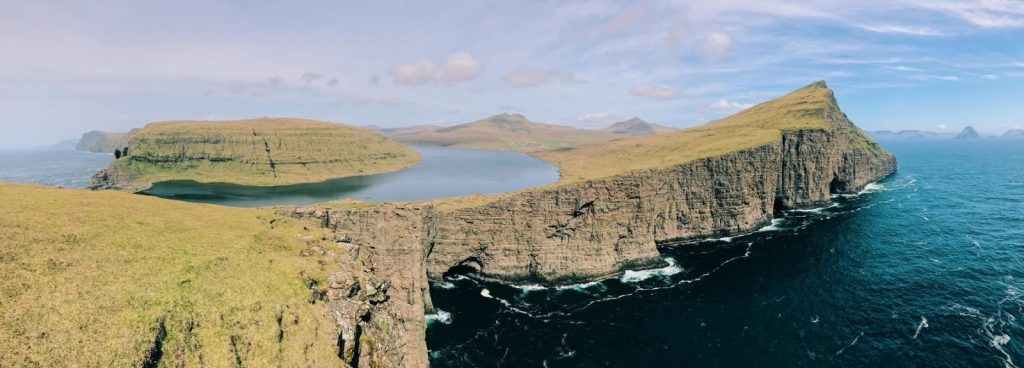
To visit some of the more remote islands the government subsidies helicopter travel. This makes it affordable to the people who live there. But with services to the outer lying islands not provided on a daily basis, you too will have to plan your trip carefully.
Seeing the Faroe Islands by boat allowed me to visit places that I would never get to any other way. Such as the Vestmanna bird cliffs and the island of Mykines famous for its colony of Puffins.
The Faroe Islands Itinerary
Day One
A real-life optical illusion; Lake Sørvágsvatn
After a few drinks and a good night’s sleep, we were ready to head off on our first adventure to see the optical illusion of the lake above the ocean.
Located on the same island as the airport, Lake Sørvágsvatn is the largest lake in the Faroe Islands and looks as though it is balanced hundreds of feet in the air floating above the ocean below. This, of course, is just a trick of nature and camera angles, as the lake is only 30 metres above the sea, yet the cliffs are 100 metres high creating an intriguing illusion as you look down.
To get there we headed back towards the airport setting our GPS coordinates on the church in Miðvágur. From the church, we followed the signs for Trælanípa/Bøsdalafossur until we could find a place to park. Nearby we found a gravel path that would take us towards the ocean at the southern end of the lake. The hike took an hour walking at a leisurely pace before reaching the top of the cliffs high above the ocean.
After taking photos and a video I posted on Instagram, we headed back to Tórshavn stopping at the Effo petrol station to top up the car and grab a bite to eat. Once back in Tórshavn we did some exploring down by the harbour and scoped out some places to go for dinner.
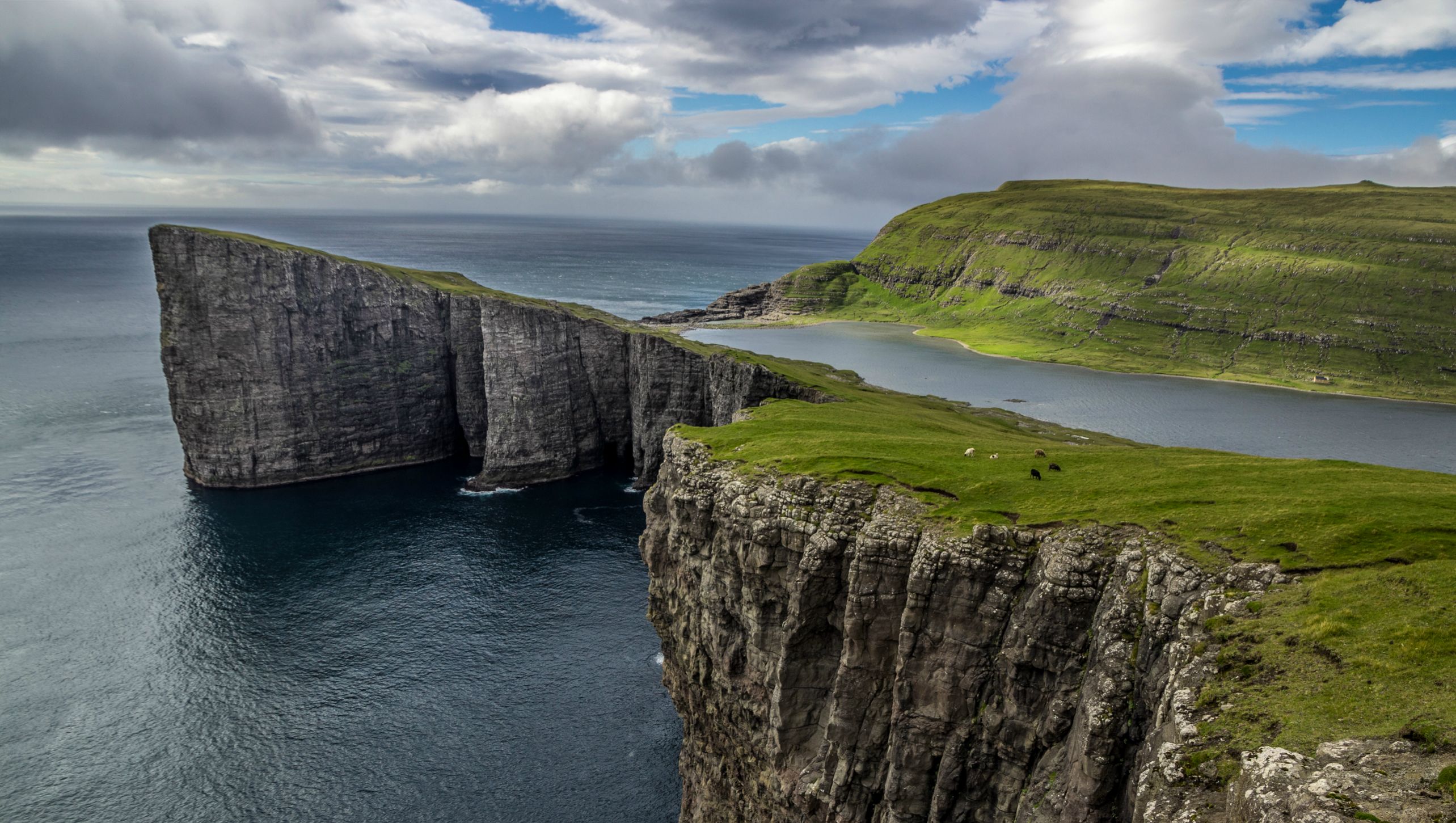
Day Two
Ferry to Kalsoy
To get to Kalsoy you need to take a ferry from the port of Klaksvík, a one hour drive from Tórshavn. We set off early in the morning to catch the 8:00am ferry for the 20-minute crossing to Syðradalur. Once there we would have the entire day to explore the island. You don’t have to worry about maps or where you are going on Kalsoy as there is only one road on the island. Pay attention to the sheep though, as they frequently wander onto the road.
Our first point of call was the village of Trøllanes from where we would hike to the Kallur lighthouse. The views from the lighthouse are spectacular, but if you want to get an epic photo with the lighthouse in it, you need to go a little further out and not be afraid of heights.
On the way back to the ferry we stopped off to see the statue of the seal woman by the village of Mikladalur and to read about the legend of how for one night of the year seals come ashore and become humans.
TIP: Pack a lunch and bring along some drinks and snacks as there is nowhere to eat on Kalsoy other than a place in Mikladalur that just sells snacks.
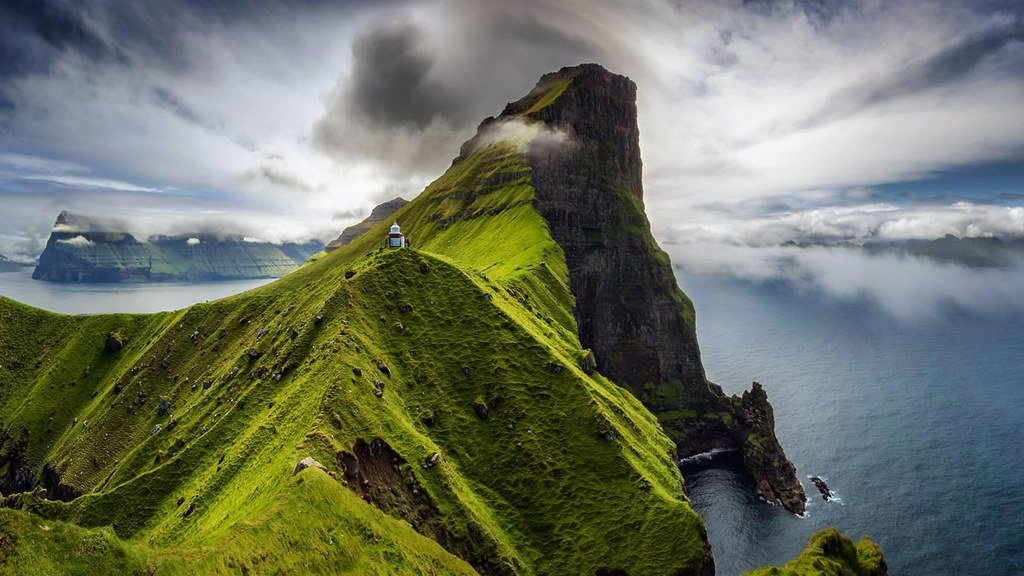
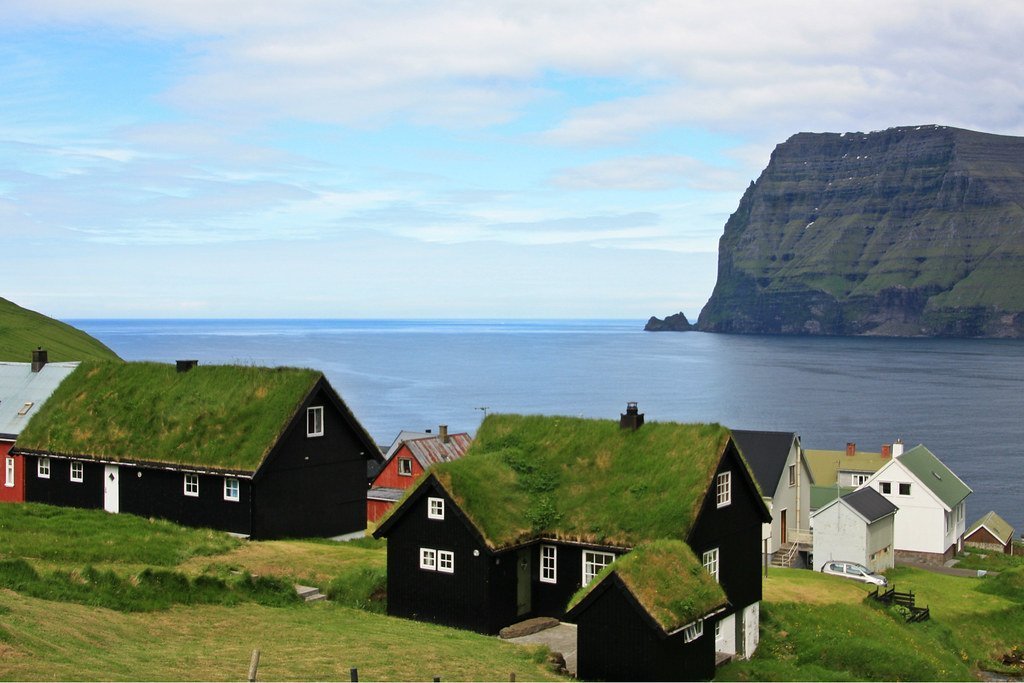
Day Three
Visit natural Harbour of Gjógv
Located an hour north of Tórshavn, Gjógv is a traditional Faroe Islands village of turf roof houses surrounded by towering mountains. There are numerous hikes that start and finish in the village, but the reason most people come here is to photograph the cliffs surrounding the harbour where fisherman launch their boats at high tide.
As we wandered around the village taking photos it became apparent just how isolated the place was and were eerily reminded of how dangerous being a fisherman was when we came across a statue with the names of local men who were lost at sea. For lunch, we went to the Gjaargardur Guesthouse restaurant for something to eat and a hot drink.


Day Four
Slættaratindur
One of my favourite sayings is “You can’t fall if you don’t climb. But there’s no joy in living your whole life on the ground.” With that thought in mind, I went off to climb Slaetraratindur (882m) the Faroe Islands highest peak. Just make sure you have the best travel insurance before you did (this one is just $9 a week!). Once on the summit, I was rewarded with an awe-inspiring view of all 18 of the islands.
Traditionally on the 21st of June, the longest day of the year, islanders climb the mountain to enjoy both the sunrise and sunset. Incidentally and I did not know this before doing it, but according to the Guinness Book of World Records, the view from the summit is the world’s longest due to atmospheric refraction of light that sometimes makes Iceland visible despite being 550 kilometres away.
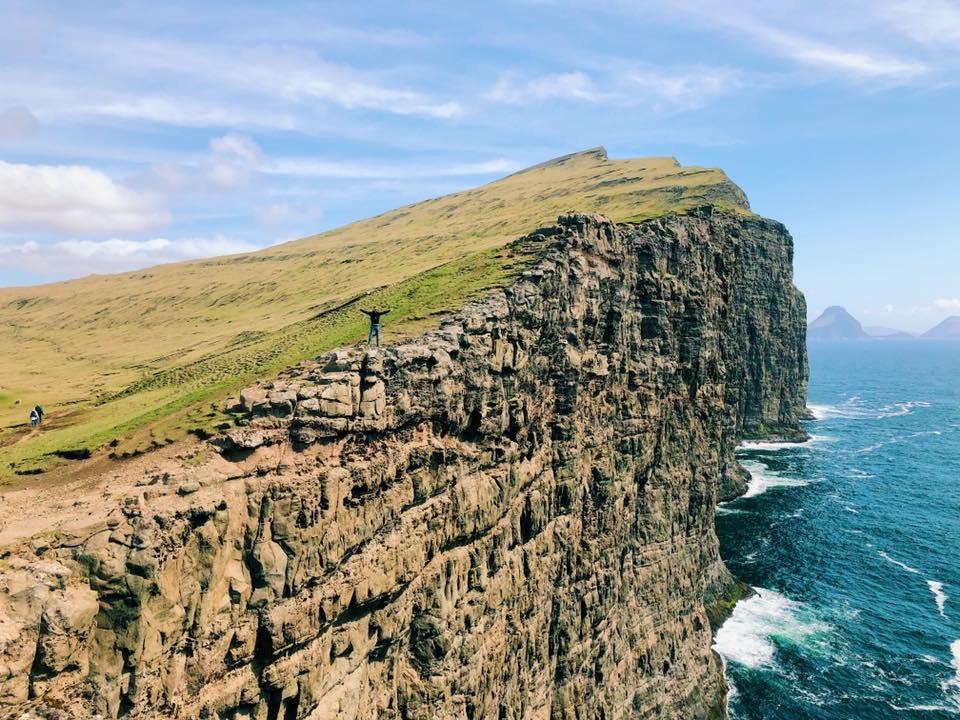

Day Five
Saksun and Mulafossur Waterfall
For our last day in the Faroe Islands, we wanted to cram as much in as possible before flying back to Copenhagen. I forgot to mention it earlier, be we always pigged out at breakfast as the meal was included in the price of the room. And once you left Tórshavn food options were extremely limited. After checking out of the hotel we packed all our belongings into the rental car and headed off to the tiny village of Saksun and its mid-19th-century church.
The village could have been the inspiration for Peter Jackson’s “Shire” in The Hobbit as it is surrounded by towering mountains. Saksun is about as picturesque a place as you will ever see and a standout of all the beautiful places we got to visit during our holiday.
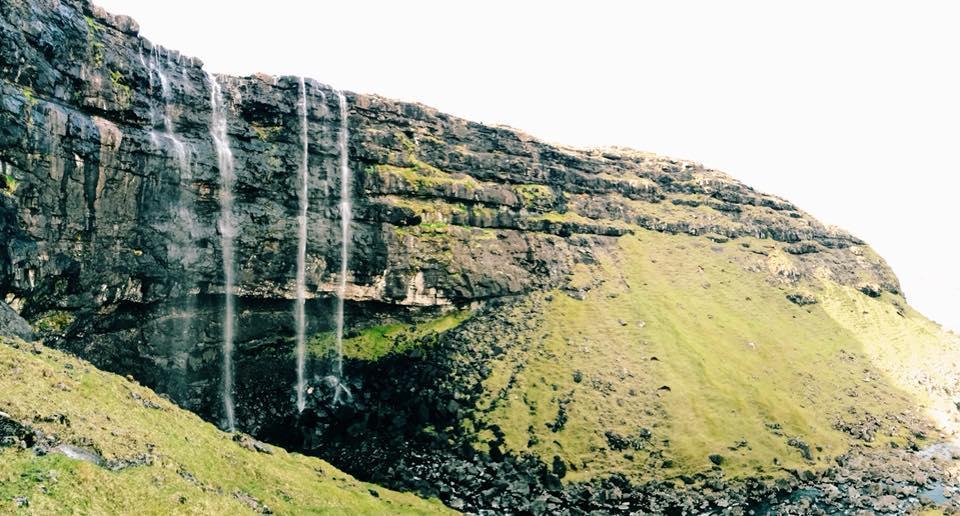
No visit to the Faroe Islands is complete without seeing the Mulafossur Waterfall. We saved for last as it is only an 18-minute drive from Vagar Airport. The waterfall is near the village of Gásadalur. It requires a little patience if you want to capture the perfect photo. Due to its exposed location, the winds tend to whip up the falling water into a spray. But if you time it right you can get that picture-perfect image.
The Northern Lights in the Faroe Islands
With the Faroe Islands being so far north it is, of course, possible to see the Northern Lights. Providing, of course, the weather allows. The best place to catch the Aurora Borealis is the northern tip of Eysturoy. Also from Klaksvík on Borðoy. Prime season for the spectacle is from September to March. I went in the summer though, so no chance for me this time.

Are the Faroe Islands expensive?
I have to say that the Faroe Islands really opened my mind with their natural beauty and lack of tourists. Other than your airfare, hotel and rent a car, you can have a good (pretty budget) time on 100€ per day if you’re happy to travel completely independently. But be prepared to get lost a fair few times. So it’s best to travel with a friend. I especially liked the fact that you could just drive around and be rewarded with spectacular scenery around every bend. Without having to spend a penny parking your car and paying an admission fee for the view.
The Faroe Islands are absolutely stunning and I am so glad I got to see them in all their glory. And before being discovered by the masses. If you hurry and start planning your journey now, you too can enjoy one of nature’s greatest spectacles without the crowds.
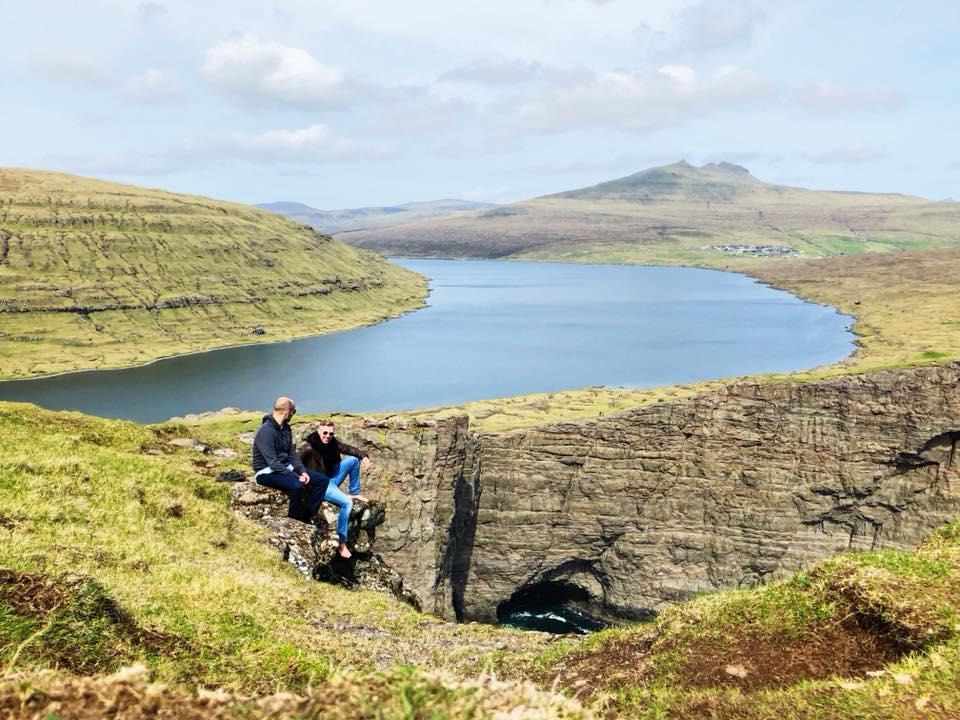
FAQs about visiting the Faroe Islands from my experience
1. What’s the best time to visit the Faroe Islands for adventure travel?
The best time to visit the Faroe Islands is from May to September. The weather is milder (for the Faroes, anyway), the days are long, and most hiking trails are accessible. If you’re into puffins and birdwatching, summer is your best bet. Winter has its charm too, with fewer crowds and a shot at seeing the Northern Lights, but outdoor adventures might be more limited due to unpredictable weather.
2. What are the top adventure activities in the Faroe Islands?
If you’re into adrenaline and the great outdoors, the Faroes are a dream. Here’s what you shouldn’t miss:
- Hiking: Trails like the one to the Kallur Lighthouse on Kalsoy or the cliffs of Sørvágsvatn are breathtaking.
- Kayaking: Paddle along the rugged coastline for a unique perspective of the islands.
- Climbing: Test your skills on the island of Sandoy, where rock climbing is popular.
- Birdwatching: Visit Mykines Island to see puffins up close. It’s like something out of a wildlife documentary.
- Boat tours: Explore sea caves or head out to see the dramatic sea stacks like Drangarnir.
3. How easy is it to get around the Faroe Islands for adventure travel?
The islands are connected by a mix of bridges, tunnels, and ferries, making it relatively easy to explore. Renting a car is the best way to get around. If you’re venturing to the smaller islands like Mykines, ferries and helicopters are available, but check schedules—they can change with the weather.
Related Post: Check out my road trip guide to Ireland for tips on navigating remote and rugged landscapes.
4. Do I need a guide for hiking in the Faroe Islands?
Not necessarily. Many of the trails are well-marked, and maps are available online or at tourist centers. However, the weather can turn quickly, so being prepared with proper gear and navigation tools is a must. If you’re not confident in your skills, hiring a local guide is a great idea—they often share stories and insights you’d otherwise miss.
5. What’s the weather like, and how should I pack for an adventure trip?
The Faroese weather is famously unpredictable. You can experience sunshine, rain, wind, and fog all in the same day. Pack layers, including waterproof jackets and sturdy hiking boots. A good backpack with space for snacks, water, and extra clothes is essential. And don’t forget your camera—the scenery is unreal.
6. Can I camp in the Faroe Islands?
Yes, camping is allowed in designated areas. Wild camping is technically prohibited unless you have the landowner’s permission, so stick to the official campsites. It’s a brilliant way to immerse yourself in nature, but be prepared for the elements, as nights can be cold and damp even in summer.
7. Is it expensive to travel to the Faroe Islands?
In a word: yes. Food, accommodation, and transport all come at a premium compared to mainland Europe. That said, adventure activities like hiking are free, and you can save by staying in guesthouses or camping. Budget travelers can still make it work with a bit of planning.
8. Are the Faroe Islands safe for solo travelers?
Absolutely. The Faroes are one of the safest places you’ll ever visit. Crime is nearly non-existent, and locals are incredibly welcoming. The main safety concerns are weather-related, so check forecasts and take precautions when heading outdoors.
For more on adventure travel and epic destinations, check out my guide to hiking in Petra and this Wikipedia page on the Faroe Islands for a bit of background before you go.
Remember, never travel without travel insurance! And never overpay for travel insurance!
I use HeyMondo. You get INSTANT quotes. Super cheap, they actually pay out, AND they cover almost everywhere, where most insurance companies don't (even places like Central African Republic etc!). You can sign-up here. PS You even get 5% off if you use MY LINK! You can even sign up if you're already overseas and traveling, pretty cool.
Also, if you want to start a blog...I CAN HELP YOU!
Also, if you want to start a blog, and start to change your life, I'd love to help you! Email me on johnny@onestep4ward.com. In the meantime, check out my super easy blog post on how to start a travel blog in under 30 minutes, here! And if you just want to get cracking, use BlueHost at a discount, through me.
Also, (if you're like me, and awful with tech-stuff) email me and my team can get a blog up and running for you, designed and everything, for $699 - email johnny@onestep4ward.com to get started.
Do you work remotely? Are you a digital nomad/blogger etc? You need to be insured too.
I use SafetyWing for my digital nomad insurance. It covers me while I live overseas. It's just $10 a week, and it's amazing! No upfront fees, you just pay week by week, and you can sign up just for a week if you want, then switch it off and on whenever. You can read my review here, and you can sign-up here!







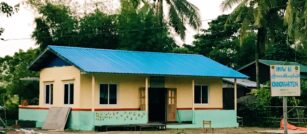
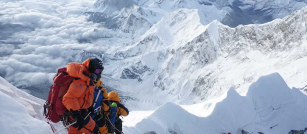
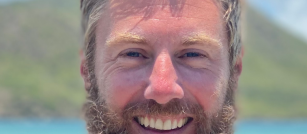



 As you know, blogging changed my life. I left Ireland broke, with no plan, with just a one-way ticket to Thailand
and no money. Since then, I started a blog, then a digital media company, I've made
more than $1,500,000 USD, bought 4 properties and visited (almost) every country in the world. And I did it all from my laptop as I
travel the world and live my dream. I talk about how I did it, and how you can do it too, in my COMPLETELY FREE
Ebook, all 20,000
words or so. Just finish the process by putting in your email below and I'll mail it right out to you immediately. No spam ever too, I promise!
As you know, blogging changed my life. I left Ireland broke, with no plan, with just a one-way ticket to Thailand
and no money. Since then, I started a blog, then a digital media company, I've made
more than $1,500,000 USD, bought 4 properties and visited (almost) every country in the world. And I did it all from my laptop as I
travel the world and live my dream. I talk about how I did it, and how you can do it too, in my COMPLETELY FREE
Ebook, all 20,000
words or so. Just finish the process by putting in your email below and I'll mail it right out to you immediately. No spam ever too, I promise!
